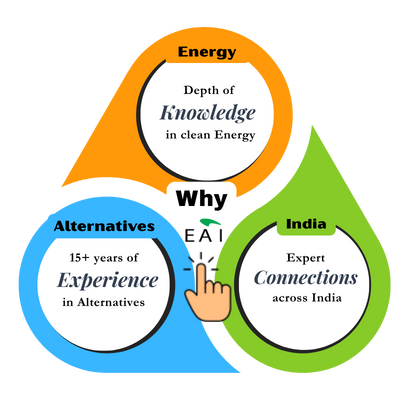India – Prominent industries and their GHG Emissions (%)
Total: 3.4 billion tons CO2 equivalent, 2023
So, this is perhaps the most anticipated break-down! How much does each industry contribute to India’s GHG?
Well, most of the industries in the Top 10 should not surprise you, of course, but some of them – such as livestock and waste management – might, because these industries, while being considerable GHG emitters, have been largely unnoticed compared to higher profile sectors such as packaging, whose core emissions are actually far lower than these!
All %s are for Scope 1 & Scope 2 emissions – naturally!
Also, the %s will go beyond 100 and that is mainly because emissions from power generation gets double counted in many of these sectors’ scope 1 emissions!
Top 10 Sectors (these form the basis for many industries)
I am categorizing “industries” into two – sectors & specific industries. Sectors, in my definition, are those that form the basis for many industries. Power generation, for instance, for instance is a sector that is used by all the industries. Agri & farming is a sector whose products go into multiple industries such as textiles, food etc. Same with cement, which goes into buildings as well as infrastructure projects. Road transport is something that is shared by many industries as part of their logistics. Waste management too supports managing waste from multiple industries.
There are really very few valuable rules or standards for such categorization, or at least I know of none. I’m doing it this way because I feel it will provide a better context to consumers of this intelligence.
Emissions estimates for top 10 sectors
- Power generation: 42%
- Mining & metals: 13%
- Agri & farming: 14%
- Livestock: 8%
- Road transport: 8%
- Oil & gas: 5%
- Cement & Construction: 7%
- Chemicals & petrochem: 4%
- Waste management: 2.5%
- Water: 2%
Top 10 Industries
Now we enter tricky territory, for 2 reasons. One, reliable estimates for specific industries are actually not easy to get, and so, in many cases, I had to use multiple benchmarks and assumptions to arrive at what I felt were estimates that are likely close to reality. Two, what scope of emissions are we talking about: 1, 2, 3, or all?
The second challenge needs a nuanced response. And that is: In some cases, it is important to provide estimates for all 3, while in some cases, just 1 & 2 are enough. Let me explain.
Take Textiles & Apparel. If we consider only the sector that makes yarn and fabric and garments, these account for perhaps 35-40% of the total emissions while the bulk of emissions are upstream (cotton production, polyester production etc.). In this case, it makes sense to provide emissions for all three scopes, because it adds value to the consumer of such information because of the source and nature of scope 1 emissions – cotton cultivation, polyester production – and the way correlations are between the various scopes.
On the other hand, let us consider aviation. Over 90% of the emissions from an airplane (LCA) is while it is operating – mainly due to its fuel use. The companies that make these airplanes are just two or behemoths none of which are Indian, and anyway, they emit very little in the overall scheme. Here, it makes more sense to stick to just Scope 1 & 2.
With all the above, things are still pretty much evolving in my head in the context of how I am estimating the emissions, so to make it simple, I’m putting down the break-up of scope 1, 2 & 3 of the total emissions for each industry, wherever possible.
Emissions estimates for Top 10 specific industries
- Information Technology & Communications: 4%
- Textiles & apparel: 2%
- Retail: 2%
- Food & dairy: 1.5%
- Pharma: 1%
- Telecom: 1%
- Hospitality: 1%
- Fertilizers: 1%
- Paper & pulp: 1%
- Aviation: 0.7-1%
How did I arrive at the above numbers? Compared to some other dimensions, GHG estimates are available for prominent sectors such as mining, power generation, road transport, and cement and construction. For many others, it was a bit of slog and using multiple benchmarks (including global ones) and other assumptions.
=====
Hope you found this useful!
If you have queries on this, please send a note to narsi@eai.in and I will try my best to help! – Narsi, EAI




